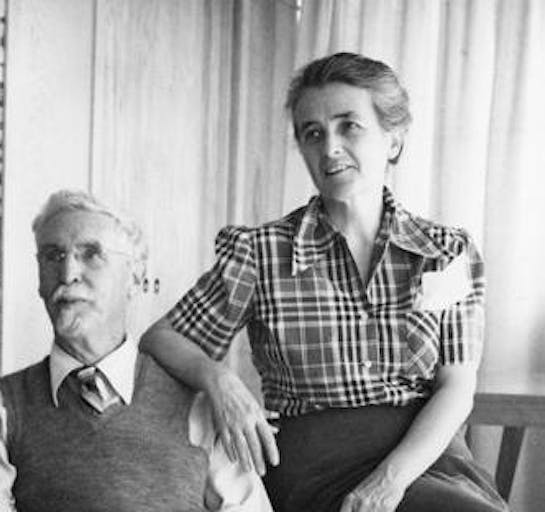Mary-Russell Ferrell Colton
1889 - 1971

Mary-Russell Ferrell Colton
1889 - 1971
Born in Louisville, Kentucky, Mary Colton was a founder of the Museum of Northern Arizona in Flagstaff as well as a noted landscapist, Indian portraitist, sculptor, museum curator, and writer. Of particular delight to her was painting the Hopi and Navajo Indians on site, directly from life.
Spending her childhood in Philadelphia, she studied portraiture at Moore Institute and at the Philadelphia School of Design for Women (the youngest in her class), 1904-09, with Henry Snell and Elliott Daingerfield. Though her education was in the study of people, she had an obvious talent for landscape painting. In her studio in Philadelphia, she worked as a commercial artist and painting restorer. She became associated with a group of ten Philadelphia women artists (The Philadelphia Ten) with whom she continued to exhibit intermittently over the next thirty years.
In 1912, she married a zoology instructor, Dr. Harold S Colton, and moved with him to Arizona twelve years later. In 1928, they became residents of Flagstaff, where she and her husband founded The Museum of Northern Arizona. He became Director, and from 1928 to 1948, she was Curator of Art and Ethnology, and in this capacity, became a major figure in encouraging Hopi and Navajo Indian crafts.
She started several programs that continued for many years including the Hopi and Navajo Craftsmen Exhibitions and the Junior Art Show. The Hopi Exhibition began in 1930 and was part of her determination to lead the American public to appreciation and financial support of these people and their skills. She also organized traveling exhibitions of Hopi arts and crafts, which led to their being seen for the first time in Eastern cities such as New York, Philadelphia, and Washington D.C. In 1942, she added the Navajos to the museum calendar of exhibitions. She edited the museum newsletter and published many books and articles on Indian art and folklore including a number of co-authored works with Edmund Neaquatewa, a Hopi who served as liaison and interpreter.
